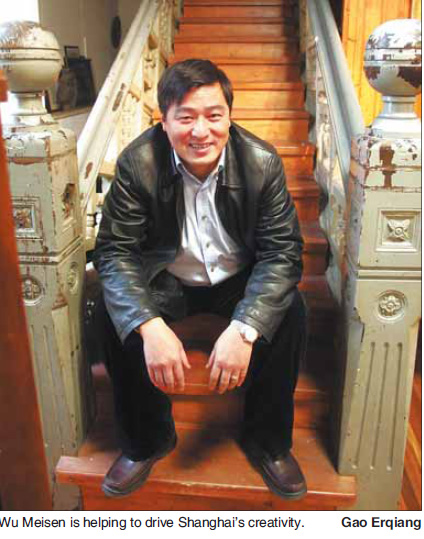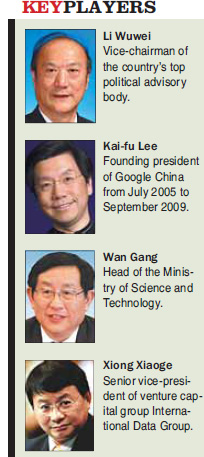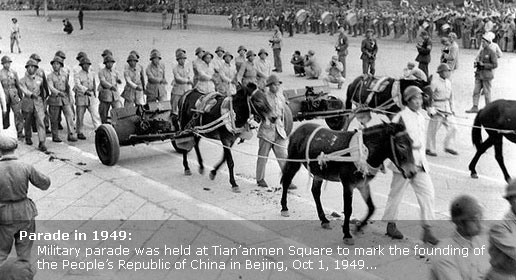60 People, 60 Stories
Sowing seeds
(China Daily)
Updated: 2009-09-30 07:41
For years, the Chinese economy has thrived mainly on the efficient harnessing of a plentiful supply of labor, land and other resources.
|
 |
This is changing.
As China celebrates its 60th anniversary of nation building, industry and government are joining hands to pursue a new breakthrough in economic growth through innovation.
It is not going to be easy. As the cost of labor, land and coal-fired energy remains low, there is little incentive for industry - especially the private sector made up of millions of small to medium-sized enterprises in the delta regions of the Yangtze River and Pearl River - to invest in research and development of new products and processes.
| ||||
At the forefront of this drive for innovation is Shanghai, the service center of the industrial heartland of the vast Yangtze River delta region that extends through several provinces in Central China. The Shanghai municipal government has established throughout the city various pockets of creativity and innovation. These are small communities that provide premises at affordable rents for creative talents and a pleasant environment where they can gather to exchange ideas.
The city's Taikang Road Creative Park takes a novel approach to nurturing creativity.

Ten years ago, Taikang Road was a typical Shanghai lane community, full of the noise and smells from families living within whispering distance of each other.
Housewives haggled over the price of live chickens and outdoor markets; men smoked cigarettes and slapped cards on courtyard tables.
Today, with more than 400 galleries, boutique shops and cafes run by people from more than 20 countries and massive plans on the way, Taikang Road has developed into a hub for creative industry.
The long path of this creative park's development stretches back to 1999, when world-renowned painter Chen Yifei and several other artists and fashion designers set up studios in old factory workshops and the Shikumen houses originally built in the 1920s. Around 100 shops and cafes moved in after the early buzz. But development stopped a few years after the district announced plans to tear down the old flats and warehouses to create space for a commercial real estate development.
"We aim to complete a community that is commercially based, culture-orientated and tourist-focused," says Wu Meisen, the planning director of the Taikang Road Creative Industry Center.
The Factory is another such district.
As a creative churner, the Factory is centered around a refurbished slaughter house of architectural design representative of the 1930s. The entire compound provides a space for young minds and top marketers to chat about developing ideas that are beginning to be taken seriously by marketers of foreign and local brands exclusively targeting younger patrons.
For example, a design company in the Factory recently hosted a brainstorming session for Pepsi's global marketing team, who came to Shanghai looking for inspiration on how to freshen up their strategy in approaching post-'80s consumers.
As China's appetite for homegrown products grows, the Factory's business model is being viewed as having the potential to flourish in a city like Shanghai, where international companies are open to innovative marketing approaches.
With the support and cooperation of the Shanghai municipal government, the Ministry of Science and Technology has also established jointly with Shanghai's Tongji University for what it calls "a global platform of science and technology management research and communication".
Time Line
2004
Concept of cultural productivity first raised at the Fourth Plenary Session of the 16th Central Committee of the Party. It is regarded as one of the major calls for developing China's creative industry.
2005
Major cities in China start to develop the creative industry. On April 28, the first 18 creative parks in Shanghai, attracting more than 400 enterprises from nearly 30 countries, are opened by the Shanghai Municipal Economic and Information Commission. On May 22, the Creative China Industrial Alliance, a non-governmental organization, is set up in Beijing.
2008
The first Pujiang Innovation Forum is held in May 18 to 19 in Shanghai. Co-sponsored by the Ministry of Science and Technology and Shanghai Government, it is themed Road to an Innovation-oriented Country and issues of innovation trends and ideas and pathways to entrepreneurial innovations are discussed.
2009
On March 5, Premier Wen Jiabao clearly proposes the idea to develop China's creative industry in his government work report. Li Wuwei, vice-chairman of the Chinese People's Political Consultative Conference suggests including creative industries in the national innovation initiative on June 3.








